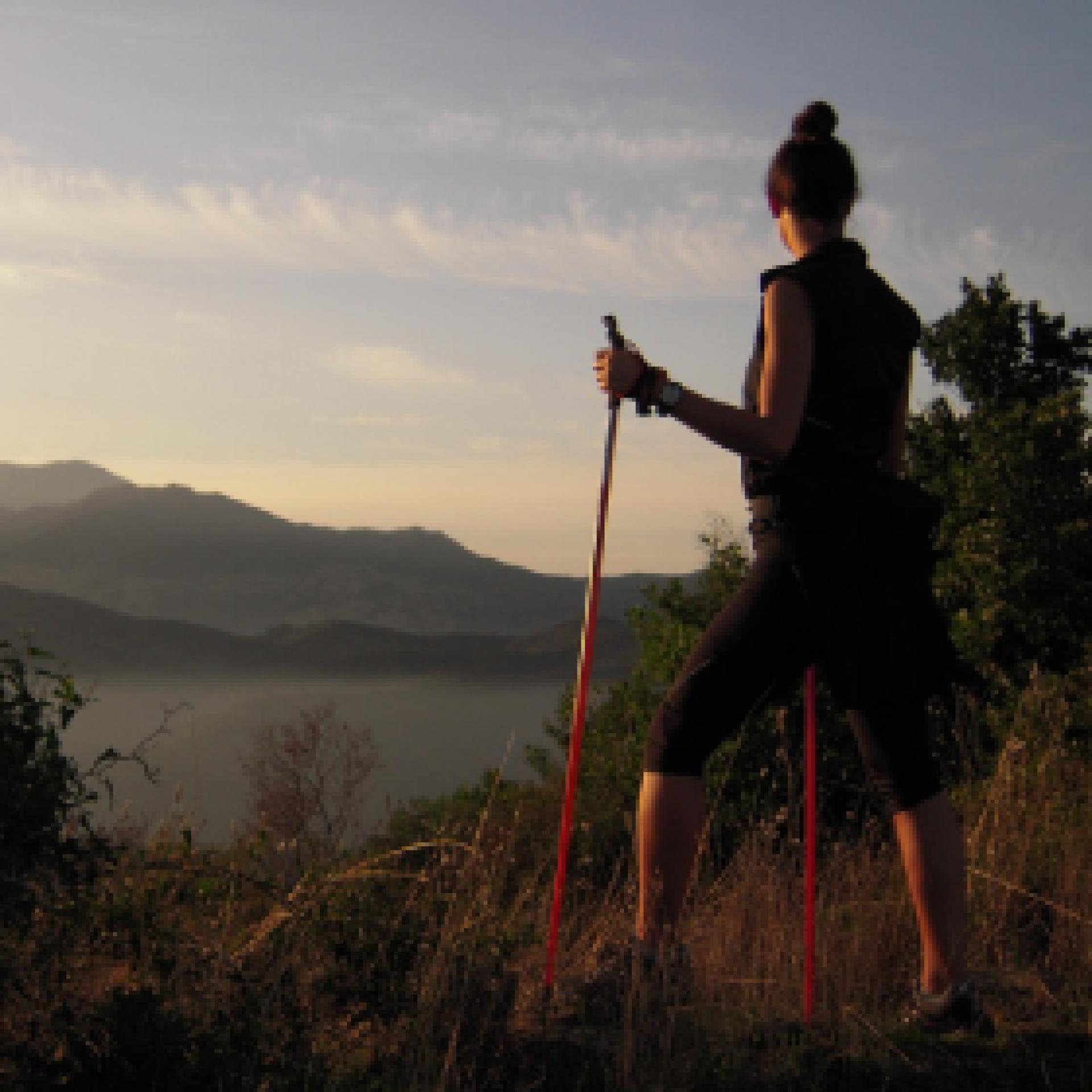Accesso
I due siti archeologici visitati da questo semplice itinerario si raggiungono entrambi tramite la SS 128, direttamente dal paese di Oniferi e seguendo le indicazioni per la SS 131.
Lasciate le ultime case alle spalle si percorrono circa 3,3 km e si individua sulla sinistra un cartello turistico che indica la necropoli. Si posteggia così in un angusto spazio accanto alla statale.
Sas Concas
Si supera un rudimentale cancello fatto di legno e si scende un lieve declivio tra alcune belle sughere, superando un guado appena accennato. Sulla sinistra si distingue chiaramente un costone di piroclastiti, dal bel colore rosaceo. L’intero costone è colonizzato da belle piante di fichidindia, in forte contrasto con i licheni arancioni tenacemente attaccati alla roccia: su queste rocce esposte a sudest gli abitanti del Neolitico decisero di trovare l’estrema dimora per i propri cari, scavando una delle necropoli più straordinarie dei loro tempi.
Girovagando per la zona si possono contare fino a venti tombe diverse, articolate spesso al loro interno in più vani. La necropoli a domus de janas è celebre inoltre per la ricchezza degli elementi decorativi nei vani funerari: si individuano focolari rituali, elementi architettonici scolpiti in rilievo e soprattutto i misteriosi graffiti che simboleggiano uomini stilizzati e capovolti. I petroglifi di Sas Concas sono assai simili ad altre raffigurazioni sparse in siti coevi in Sardegna e rappresentano una simbologia arcaica e ancora misteriosa: tra le tombe della necropoli, quelli meglio conservati si trovano nell’ampia tomba dell’emiciclo, preceduta da un vano scavato nella roccia oggi in gran parte eroso.
Nuraghe Ola
Terminata la visita alla necropoli si può tornare all’auto proseguendo sulla SS128, ignorando le deviazioni per la SS 131 DCN e rimanendo sulla vecchia statale per circa 3 km: sulla sinistra della strada, ben segnalato e visibile, si staglia il magnifico Nuraghe Ola, al centro di un’area ad alta densità di monumenti archeologici.
L’antica torre nuragica, di tipo semplice, si raggiunge per un breve sentiero che si diparte dal parcheggio. Subito prima del monumento si incontrano due ampie capanne, oggetto di indagine archeologica in tempi recenti. Anche il nuraghe è stato recentemente restaurato. Si compone di un’ampia camera interna a tholos, dove sono presenti alcune nicchie, e da una splendida scala intermuraria che permette di accedere al piano superiore. Qui si nota una lastra che chiude la tholos e che, nel solstizio d’estate, viene talvolta rimossa per permettere di assistere al suggestivo fenomeno del raggio di sole che, a mezzogiorno, penetra nel buio della camera sottostante.
Terminata la visita si può rientrare al paese o visitare la bella necropoli di Brodu, poco distante, ma non segnalata

